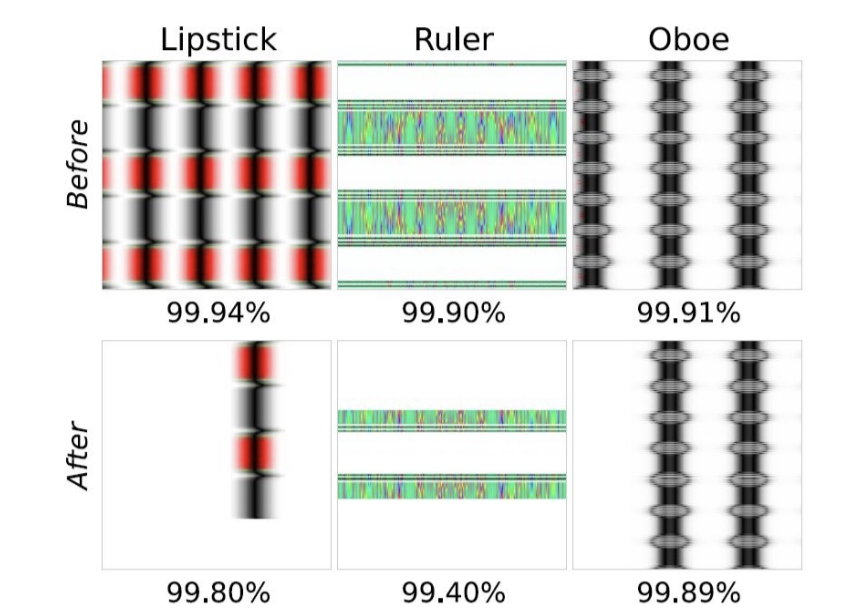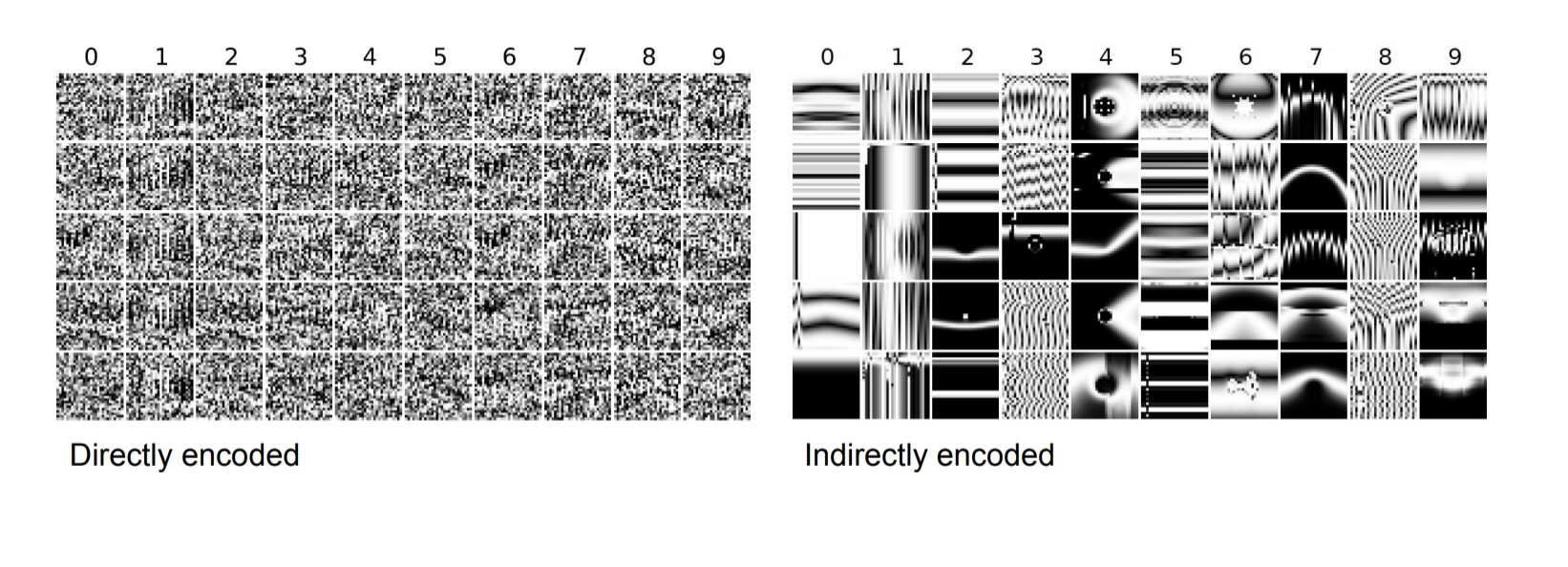Deep Neural Networks Are Easily Fooled High Confidence Predictions for Unrecognizable Images
- @nguyenDeepNeuralNetworks2015
- Current study
- False positives
- MAP Elites algorithm
- parallel generation
- Direct encodings
- Indirect encodings
- Gradient ascent generation
GA
- Population of individuals
- Each individual has a fitness
- Mutation makes small edits to specific individuals
- Recombination (not used here)
Direct Encoding
- Individuals are images in pixel space
- Fitness is the confidence of the DNN that the individual is a class
- Mutations make edits to the pixel values
Indirect Encoding
- Individuals are Compositional Pattern-Producing Networks (CPPNs)
- The CPPN generates an image
- All individuals initially have no hidden neurons
- Mutations add new neurons to the networks
- Maximize confidence of the network
Gradient Ascent
- Take the gradient with respect to the image pixel values
- Modify the image by moving it in the direction of the gradient
MNIST Results - EAs
ImageNet Results - EAs
- Harder to fool
- Different runs result into differences in patterns
- Removing repetitive patterns does not cause a dramatic confidence drop
- Global structures are not learned



What about a Fooling Class?
- MNIST
- Added an 11th fooling class.
- Evolved unrecognizable images were still recognized as digits.
- Number of misclassifications did not decrease.
- ImageNet
- Added an 1001st fooling class.
- No decrease in confidence for directly evolved images, but already low confidence.
- Confidence decreased from 88.1% to 11.7% for indirectly evolved images.
- Indirectly evolved images are easier to differentiate.
Gradient Ascent Results
- Maximize softmax output
- Produced unrecognizable images classified with 99.99% confidence



